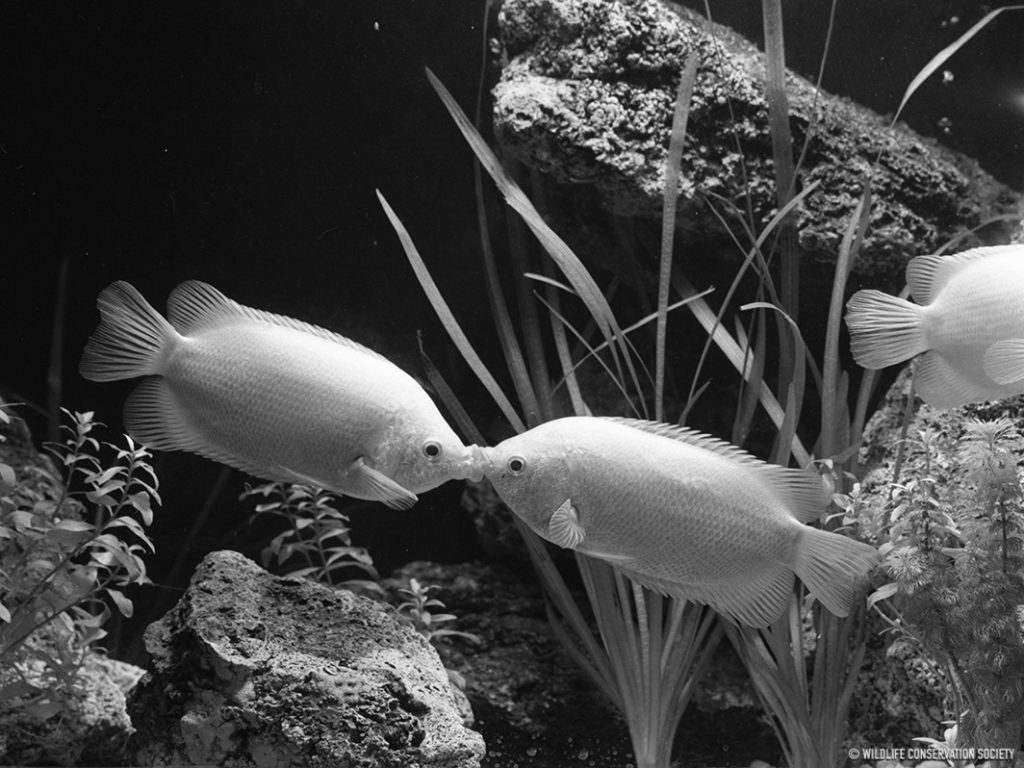
Happy Valentine’s Day from these two Kissing Gourami sharing a kiss in 1965!
View on Instagram

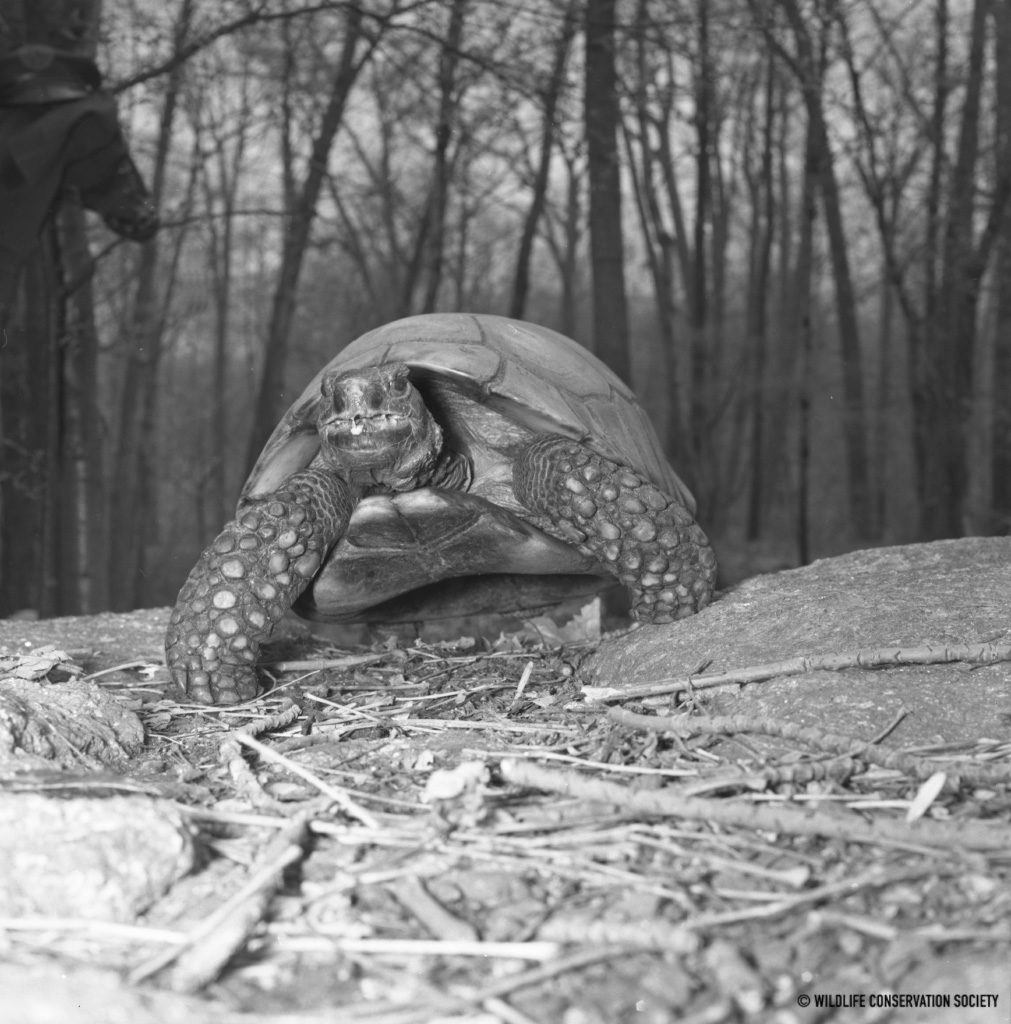
In its early days, the Bronx Zoo received many animals as donations. In 1914, the Bronx Zoo received an animal gift that stands out today as it was from a former President of the United States. On March 26th, the zoo became home to Teddy, a Brazilian giant tortoise, and the gift of Theodore Roosevelt.
Continue reading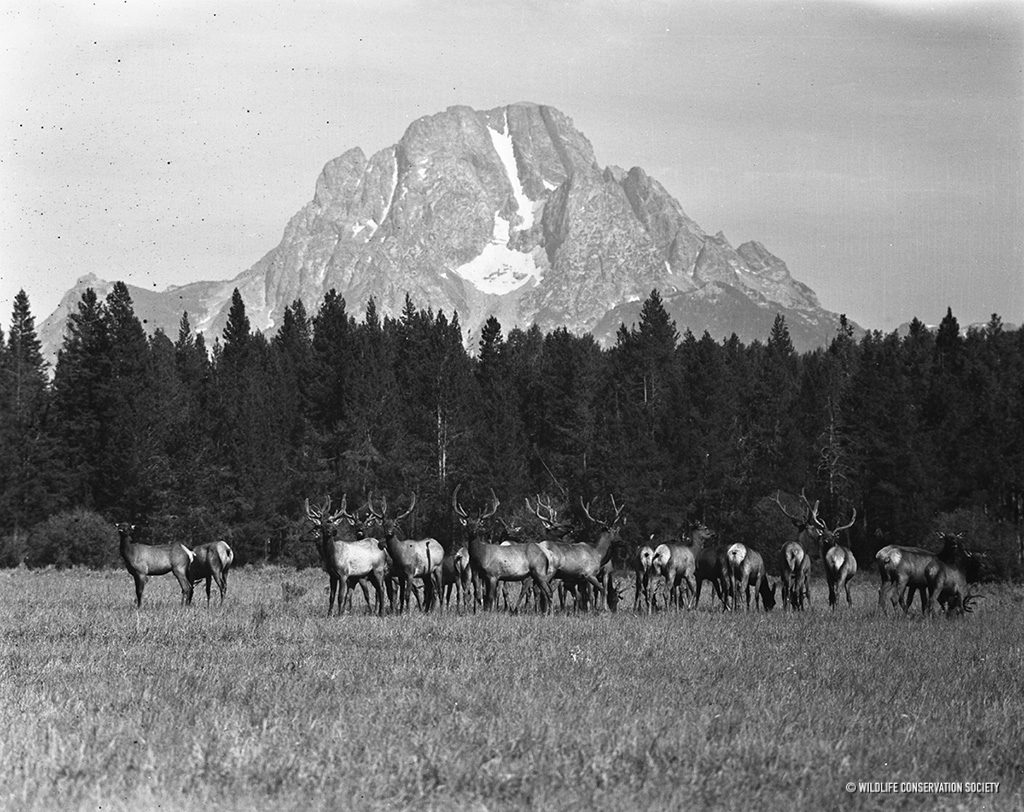
In this week’s Throwback Thursday on WCS’s photo blog Wild View we look back at the 1948 opening of Jackson Hole Wildlife Park in Wyoming, which WCS played an active role in developing. Research done by field scientists at Jackson Hole helped with the management of future wildlife Parks, like Grand Teton, of which JHWP would later become part of.
Read on Wild View

The Wildlife Conservation Society has a collection of approximately 54,000 historical photographic negatives that date back to the opening of the Bronx Zoo in 1899. In order to preserve the integrity of these negatives and enhance access to their historic imagery, the WCS Archives has undertaken an enormous negative re-housing and evaluation project, which began in 2016. The bulk of the collection features photographs of the various inhabitants of the zoo but also documents other aspects of WCS’s history, including images of the New York Aquarium and of early field expeditions. The chronological assessment of these negatives has illuminated important milestones in the Bronx Zoo’s history and evolution to the zoological park it has become today. One such milestone occurred in 1961 in the Small Mammal House.
Continue reading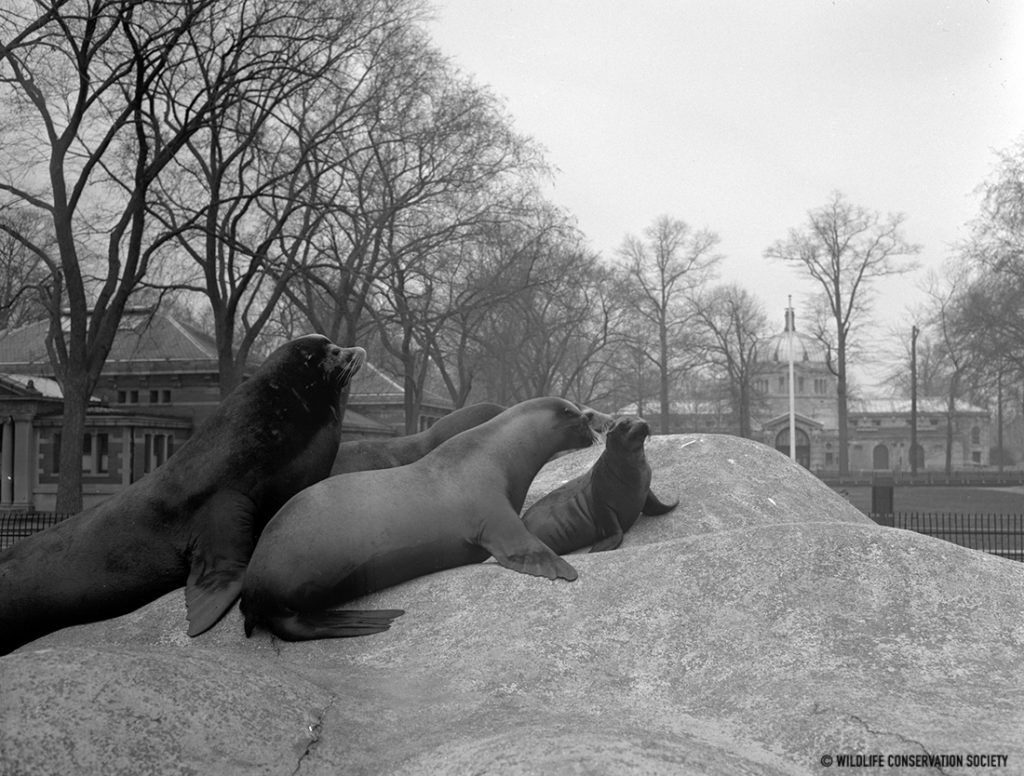
Over on WCS’s photo blog Wild View, we highlight how sea lions have been part of the Bronx Zoo since the Wildlife Conservation Society opened the park in 1899, and sea lions are part of all five zoos and the aquarium that WCS operates.

Over on WCS’s photo blog Wild View, check out a post by Julie Larsen Maher on WCS’s first staff photographer, who deemed photography “an exact and exacting science.” To celebrate the 125th anniversary of WCS, Wild View will be running special Throwback Thursdays regularly in 2020. #wcs125 #WCSWildView #tbt #bison #zoohistory #historyofphotography
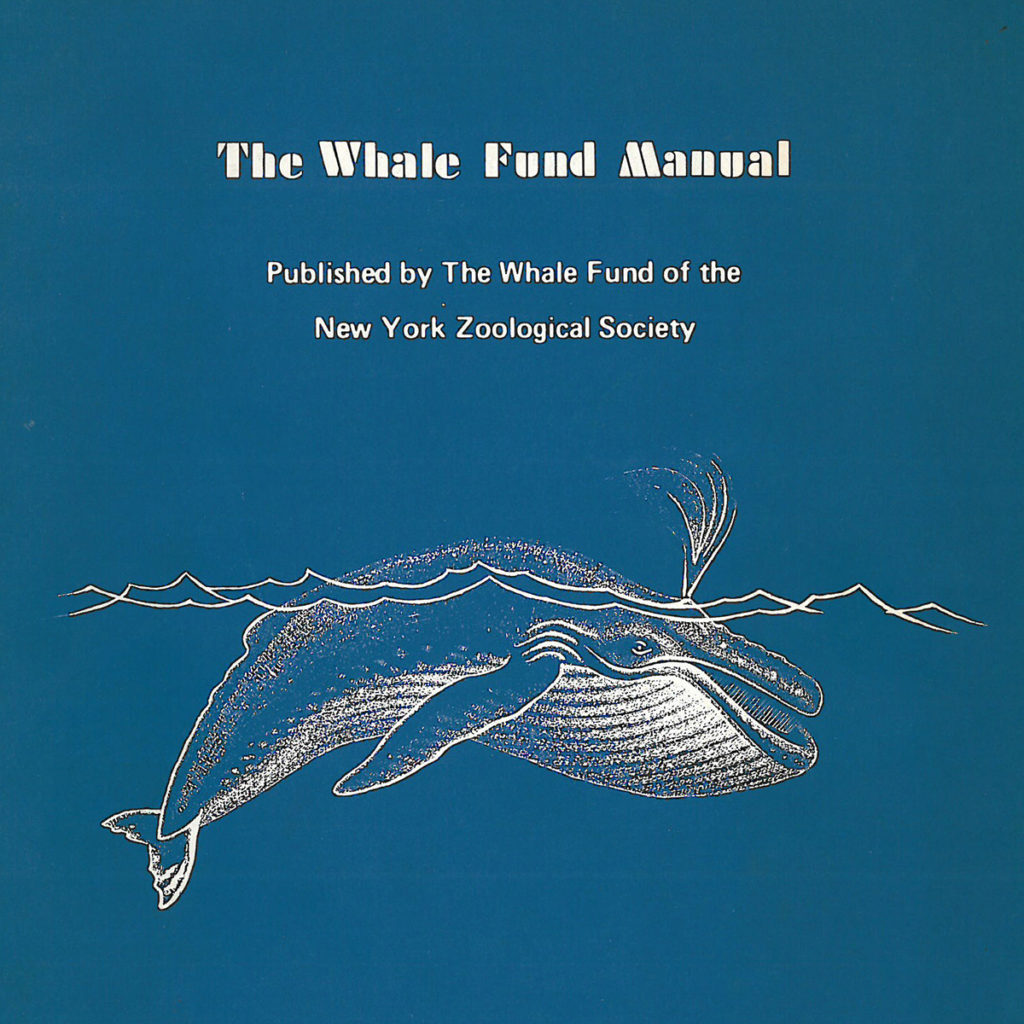
In 1969 WCS established the Whale Fund. Under the direction of Roger Payne, the Whale Fund provided resources for the study and conservation of endangered whales.
View on Instagram
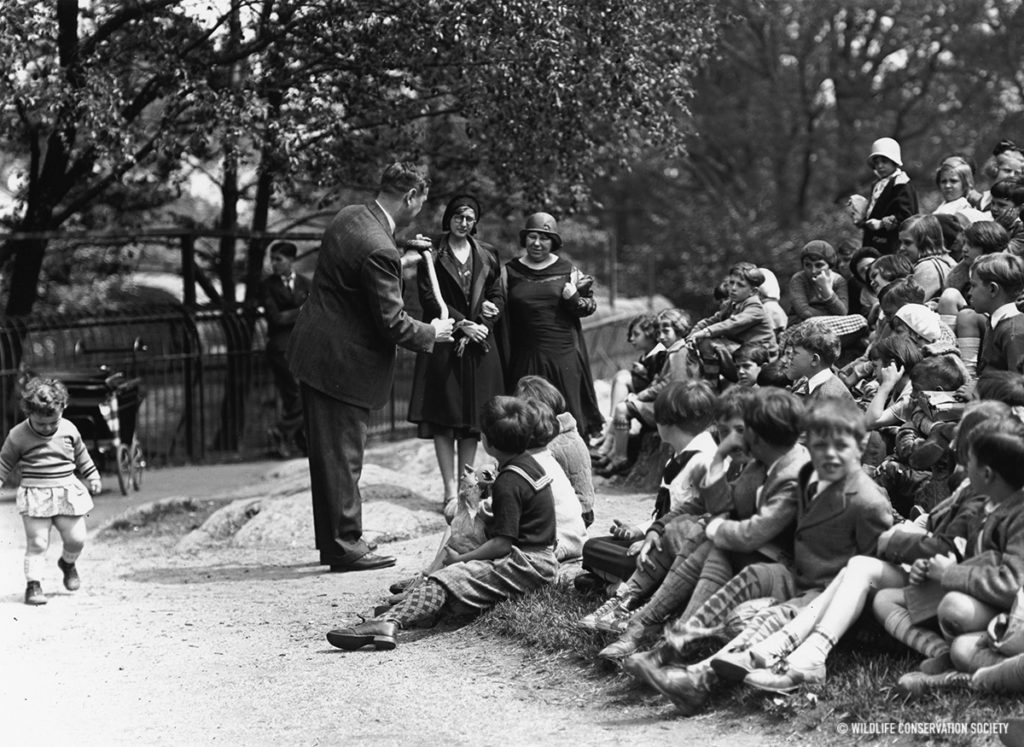
We are celebrating the 90th Anniversary of the WCS Department of Education! In this photo, the first Curator of Education, Claude Leister, lectures school children in 1931. Today, the Education Department works to inspire a diverse, inclusive movement of conservation advocates through their programs and activities across the five WCS parks.
View on Instagram
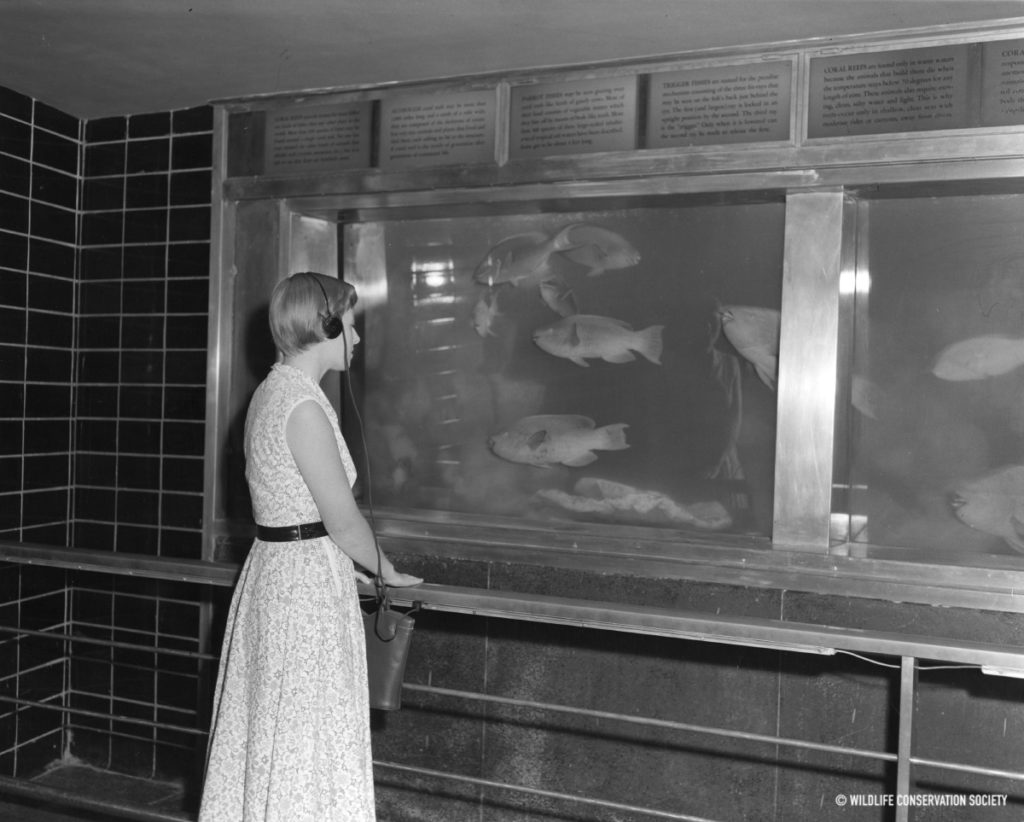
A visitor at the @nyaquarium listens to an audio recording that describes the exhibits as she explores. June 12, 1957.
View on Instagram

In the 1960s, the Mammalogy Department at the Bronx Zoo invented an exhibit specially for housing nocturnal animals. The Red Light Room in the Small Mammal House opened in 1961, and it used Red Lights to help create a day cycle for the animals. Red light is bright for humans and dim for the animals, so the room allowed visitors to see the animals being active in their nighttime environment. White light at night simulated day time, when the animals sleep. This method was then implemented in the World of Darkness exhibit at the zoo that opened in 1969, which is featured in this photo.
View on Instagram